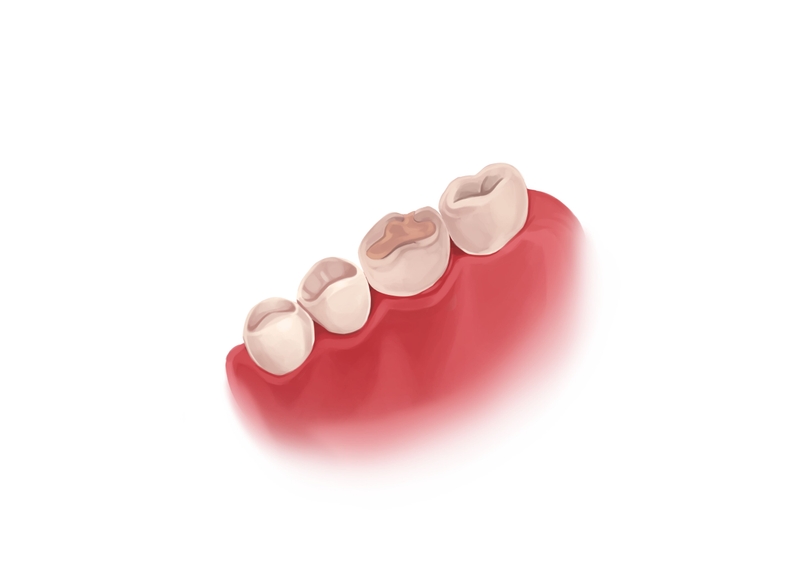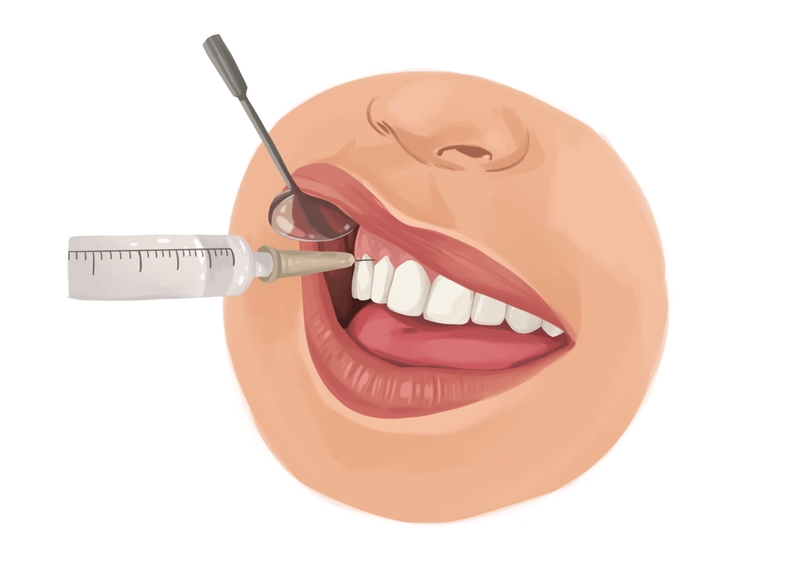- How long you have to wait to eat after a filling depends on the type of filling you get. With some fillings, you can eat right away, but you should still avoid it because of the local anesthetic.
- After a composite filling, you can eat right away. For metal fillings, you must wait 24 hours for them to harden before you can eat.
- Eat soft or liquid foods such as fruit smoothies, protein shakes, oatmeal, yogurt, cottage cheese, mashed potatoes and soups after a filling.
Your best smile is within reach. Use Authority Dental to find emergency dentists near your location. It’s simple, fast and free.
Not sure if it's a good idea to have a meal after a filling? Here's everything you need to know.
How long after a filling can you eat?
The amount of time you need to wait before you eat after having a filling done depends on which kind of filling you get.
The two most popular types are composites and metal.
Composite filling

Picture by Authority Dental under CC 2.0 license
You might also hear these referred to as resin or tooth-colored fillings. Composite fillings are much more common these days. Many dentists do not place any other kind of filling.
Composites are cured using Blue UV light. The light activates chemical components within the resin, which cause the material to harden. After about five seconds under ultraviolet light, the resin is as hard as it will ever get.
Technically, you can chew with it right away. However, you may not want to due to other factors, which we'll discuss in the next section.
Metal filling

Picture by Authority Dental under CC 2.0 license
Metal fillings are also called amalgams or silver fillings. They are not nearly as common as resin ones, since they aren't aesthetically pleasing. In addition, amalgam contains mercury, which many patients would prefer not to have in their mouths. Metal fillings also expand and contract more than composite ones, which causes teeth to fracture. Still, there are some cases when amalgams are a better treatment.
Amalgam fillings do not use ultraviolet light to cure. When the dentist goes to place the filling, they will mix the metal components, which begins the hardening process. They'll have a short amount of time to place and shape the filling before the material becomes unmoldable.
However, you should still wait about 24 hours before eating on that side of your mouth as that is how long it takes for the amalgam to finish curing.
What factors can affect eating after a filling?

Picture by Authority Dental under CC 2.0 license
Outside of the material used, there are a few other factors to consider after you've had a filling placed.
Local anesthetic
It is rare to not use anesthetic when getting a filling. Without it, you will feel sharp pain and quite a lot of sensitivity. Your dentist will place a local anesthetic to numb the area.
Depending on which tooth they're working on, you may either feel numbness in just that one area or that whole portion of your jaw. For example, if you have a mandibular (lower) right molar worked on, your dentist will probably have to use an injection that will numb the entire lower right portion of the jaw.
Regardless of where the numbness is, it's best to avoid chewing anything until the anesthetic has worn off. You may unknowingly chew on part of your lip, cheek, or tongue if you don't wait. This will cause complications and in severe cases, you will even need to return to the dentist for treatment.
Fortunately, local anesthetic does not last too long. Most people metabolize it within a couple of hours.
Discomfort and sensitivity
It's common to have slight discomfort and sensitivity after the filling is placed. The nerve of your tooth is very close to the enamel and dentin and will often be aggravated after having treatment. You may feel a sharp zing when eating for the first week.
However, if your discomfort worsens or does not get better after a week, you should call your dental professional. Sometimes, the filling needs to be adjusted so that all the teeth are hitting evenly. If they aren't, this can cause unwanted irritation and a surprising amount of pain. You can take over the counter pain medication as needed.
Gum tissue recovery
Your gum tissue could also be somewhat tender after the filling is placed. This largely depends on where the filling was. Fillings that are close to the gum line or between the teeth often provoke more gum tissue tenderness. Gum tissue heals very quickly, so this will only last for one or two days. You can use a warm salt water rinse to promote faster healing.
Tips for eating after a dental filling
If you are hungry soon after your filling appointment, it's best to stick with soft or liquid foods until the local anesthetic wears off and you've had a chance to adapt to the new restoration. Foods like a fruit smoothie, a protein shake, oatmeal, yogurt, cottage cheese, mashed potatoes, and soups are a few excellent options.
FAQ
What foods should I avoid after tooth filling?
Avoid hard, sticky, or crunchy foods for the first day after having a filling placed. Soft foods are easier to consume and are less likely to cause damage to the tooth or surrounding tissue.
Can I drink water right after a dental filling procedure?
Yes, you can drink water immediately following a dental filling placement.